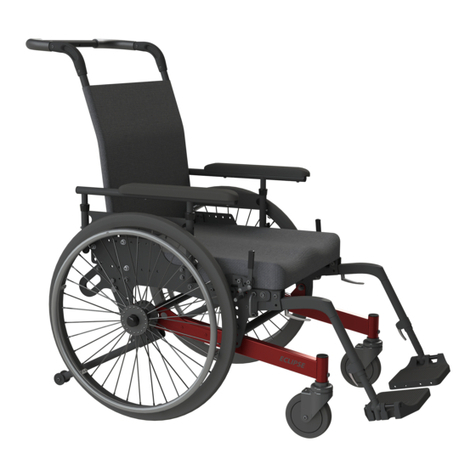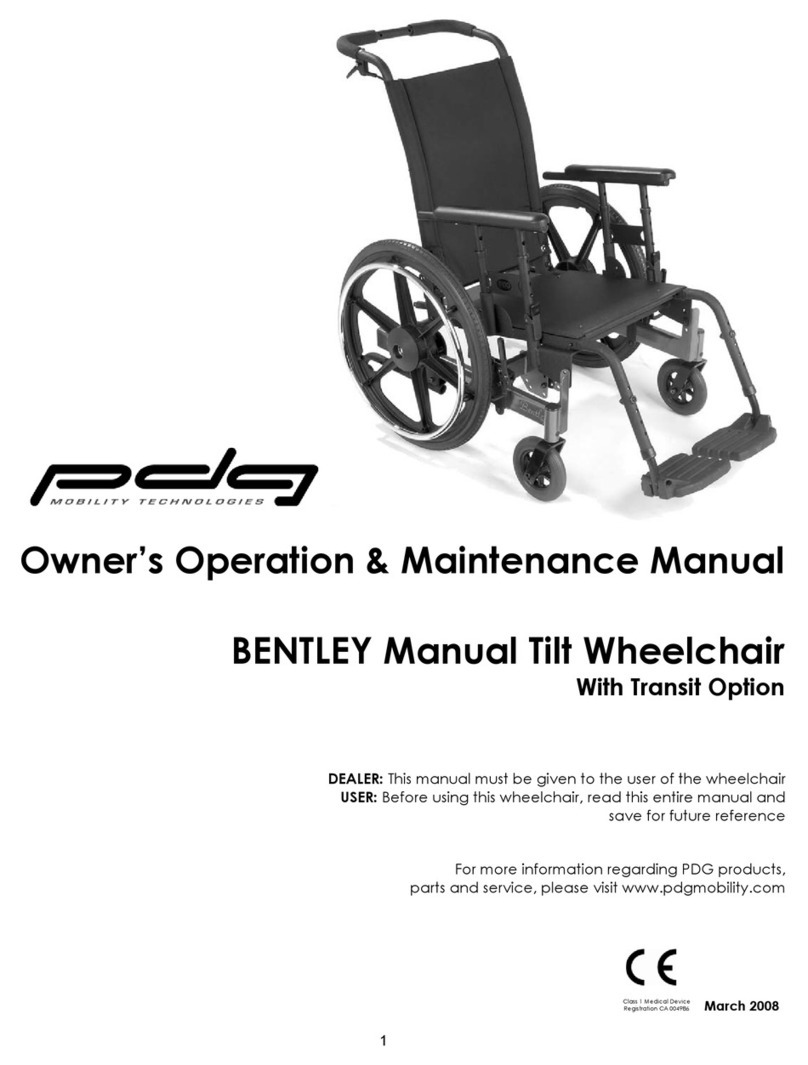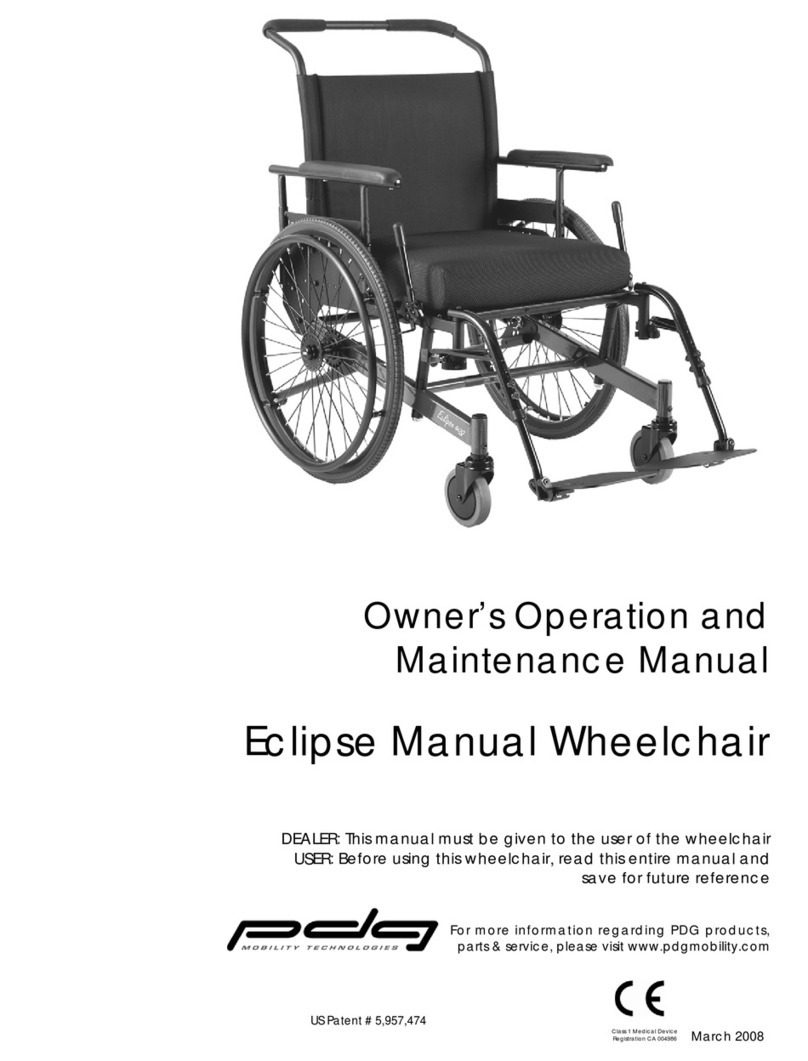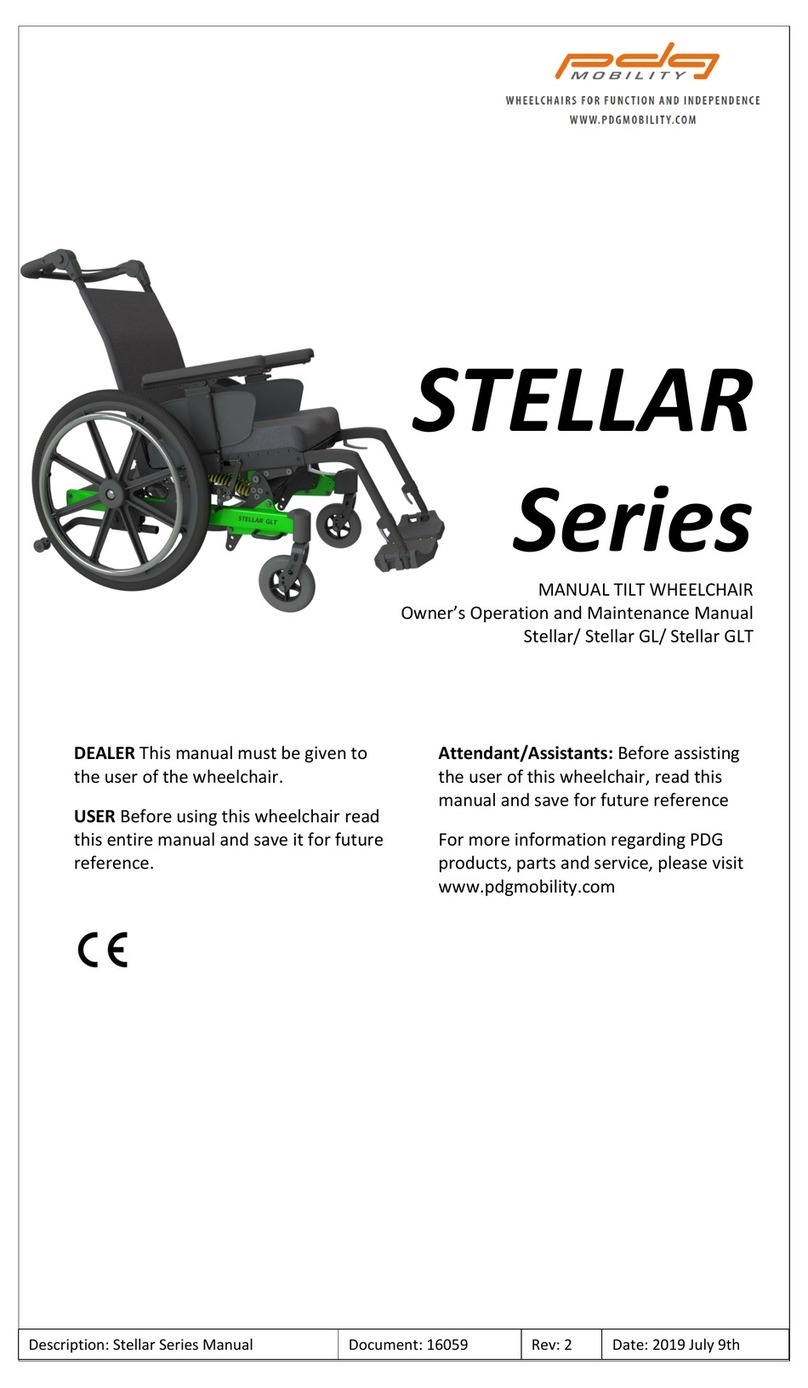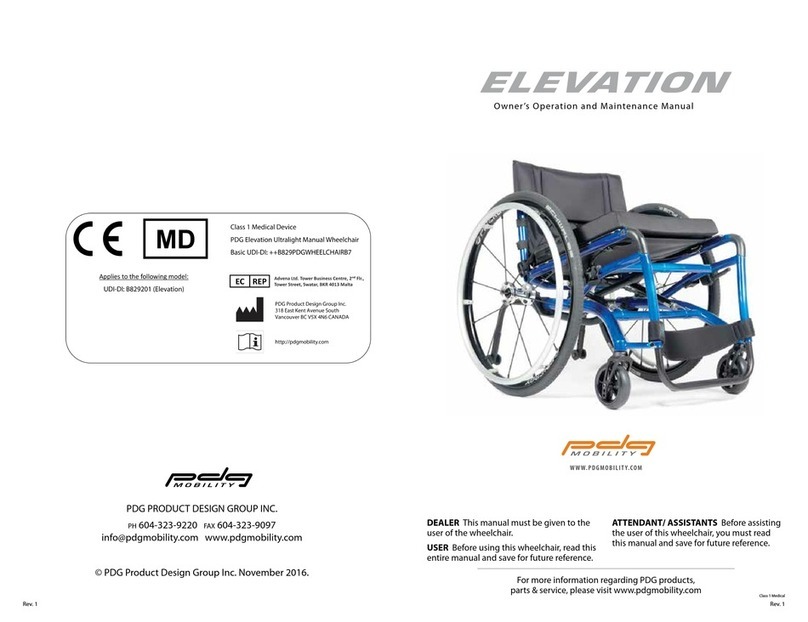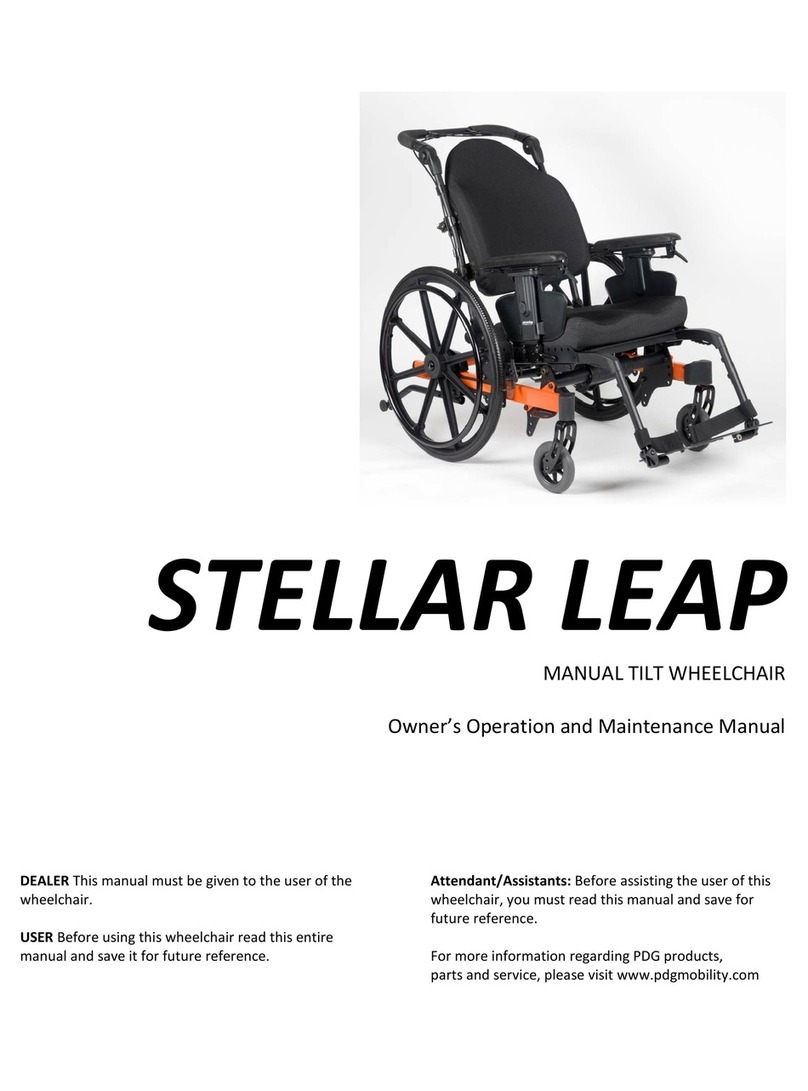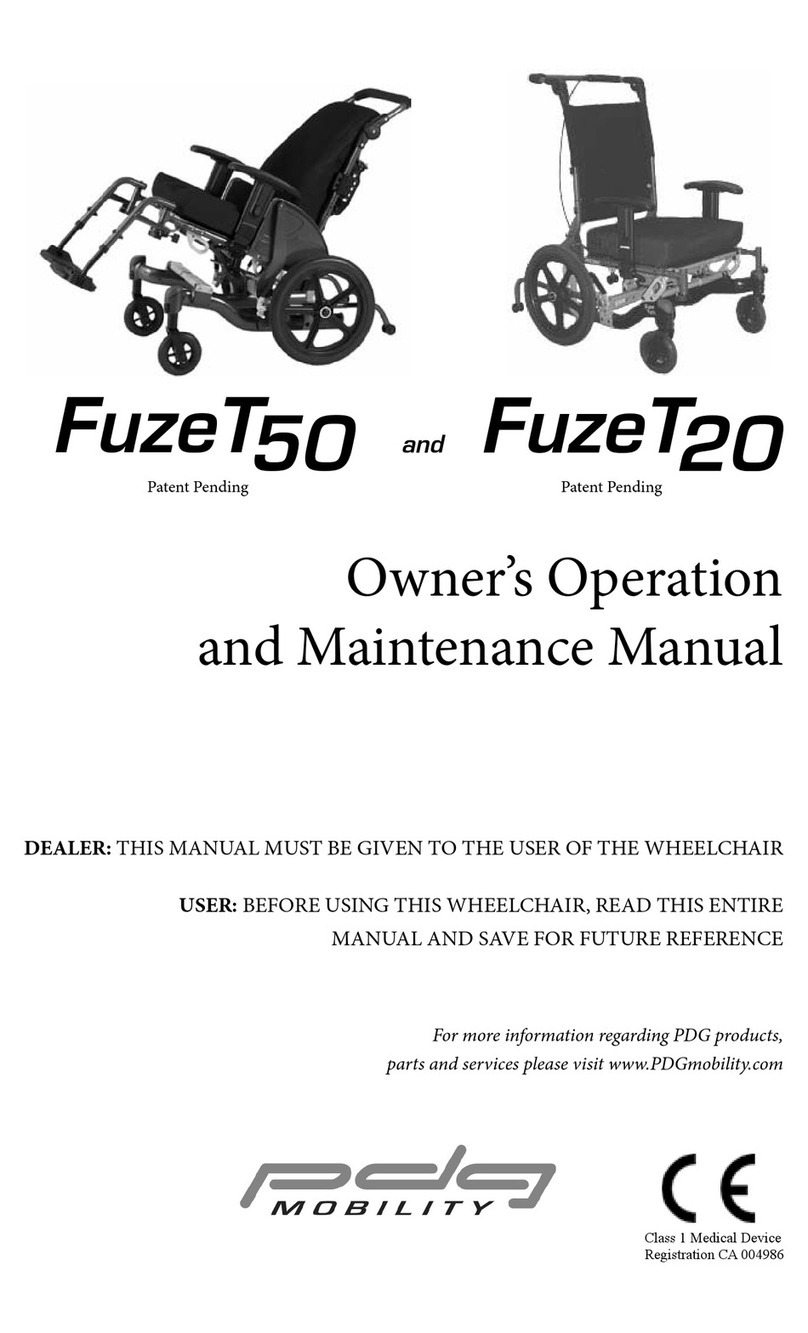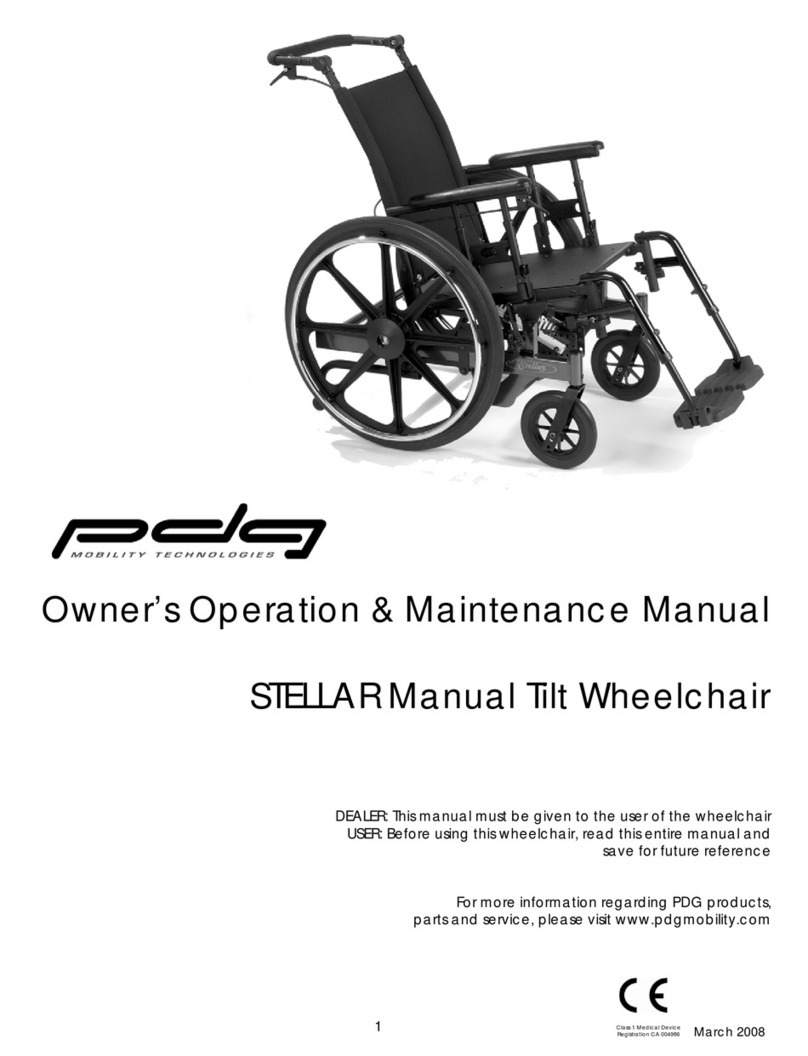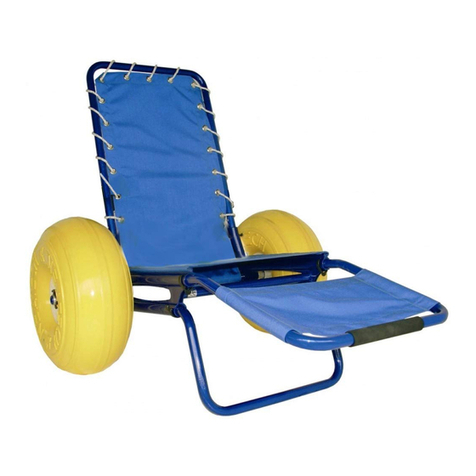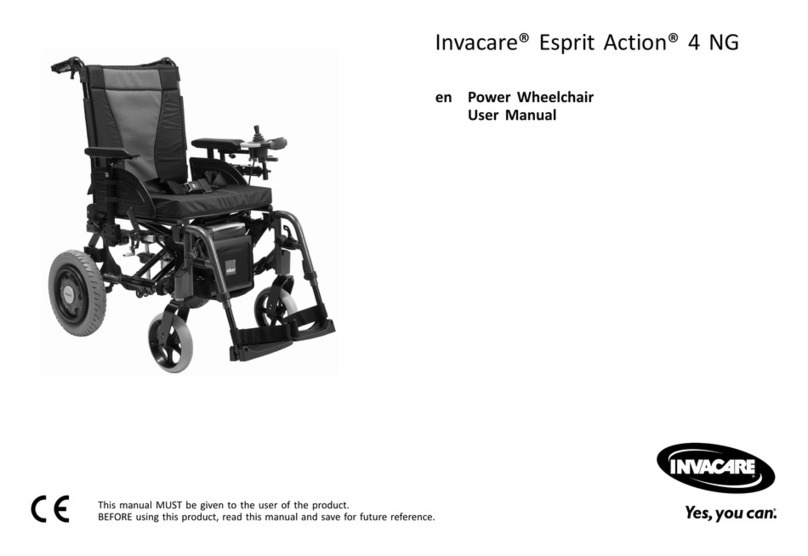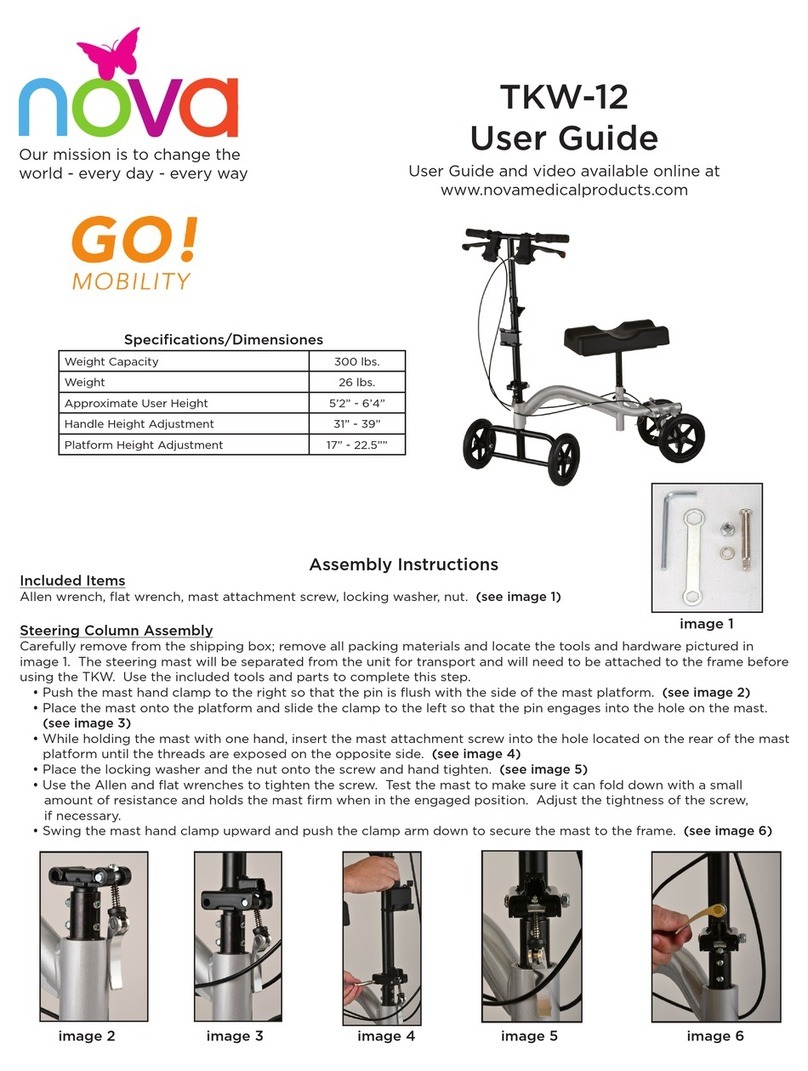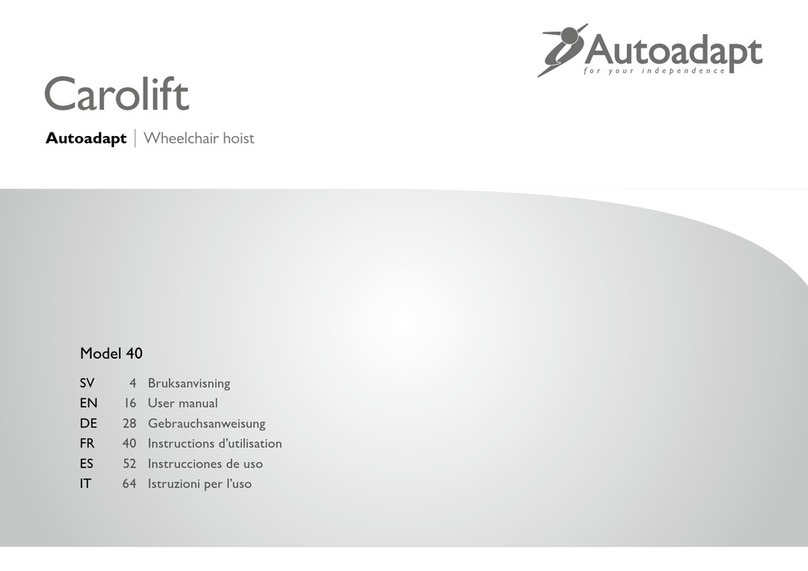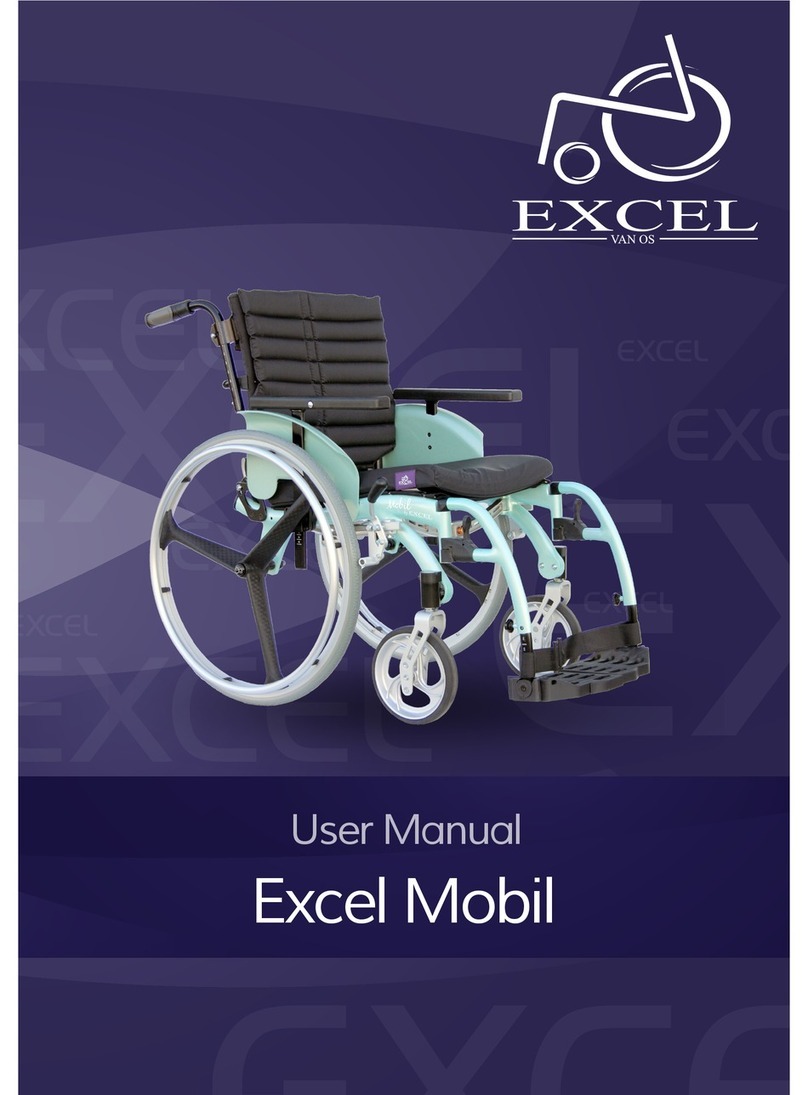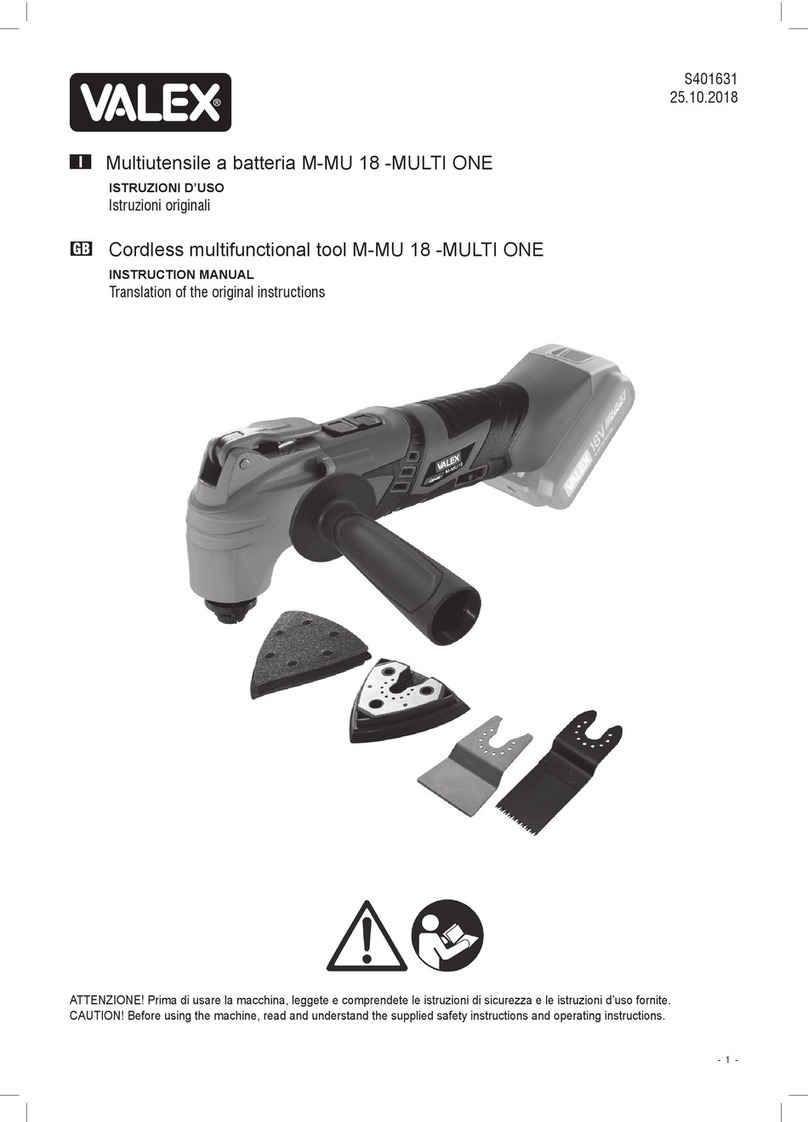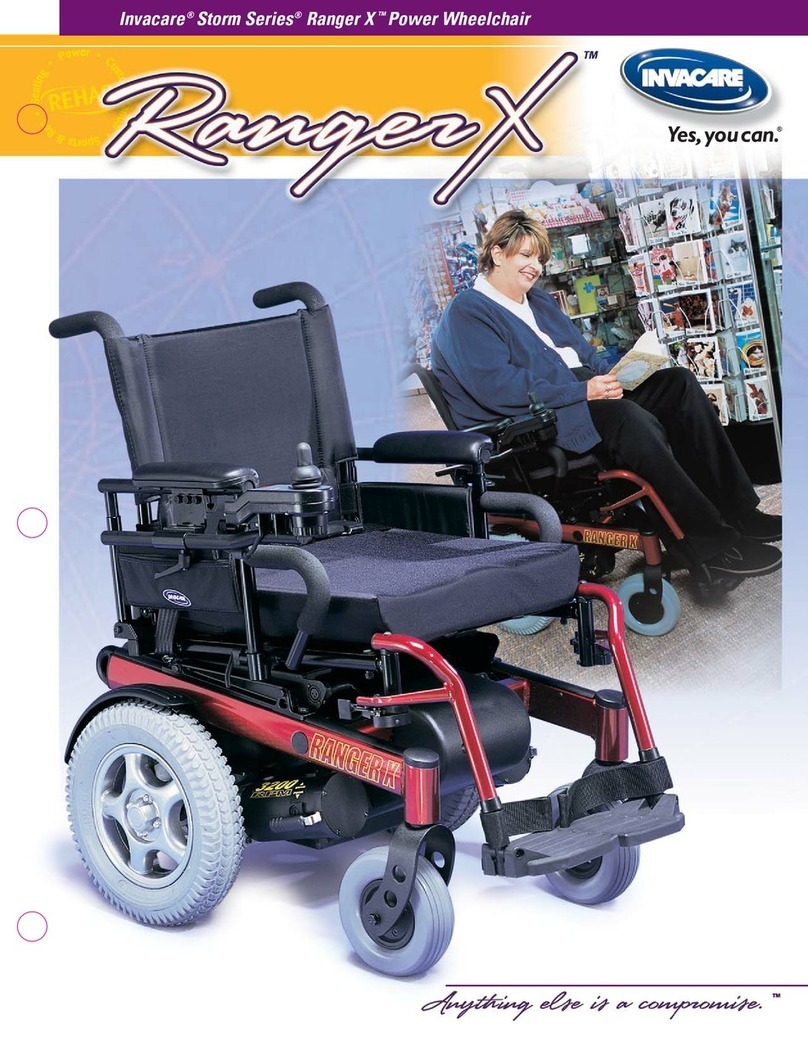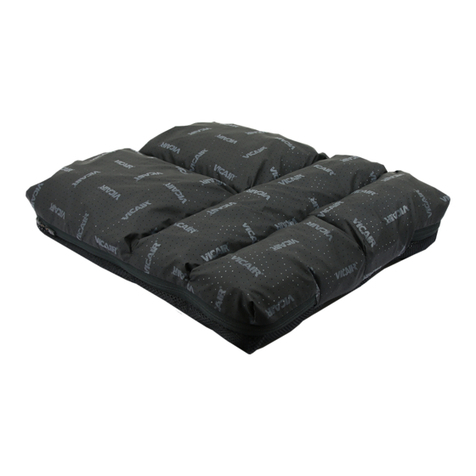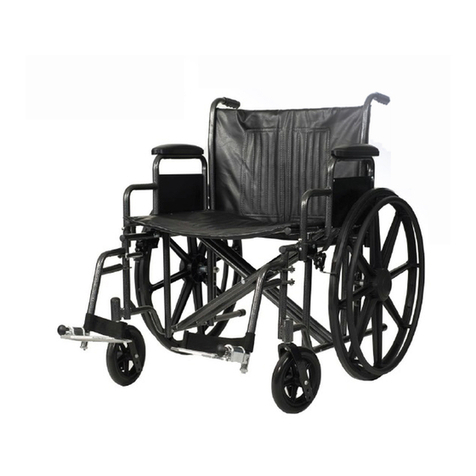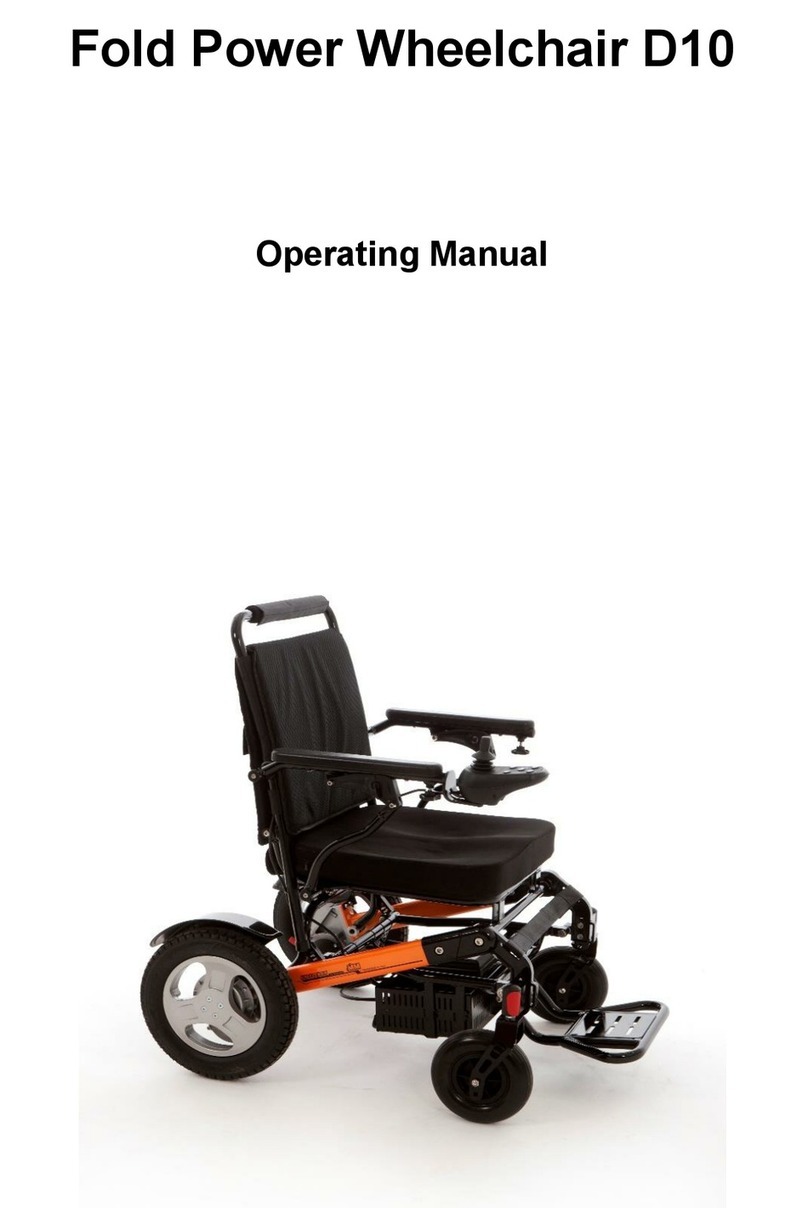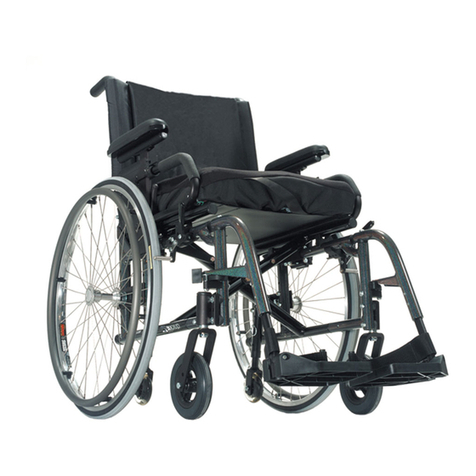DRAFT
DRAFT
page 25
page 4
6 DO NOT attempt to ride over curbs or obstacles. Doing so may cause your wheelchair to turn over
and cause bodily harm or damage to the wheelchair.
6 DO NOT use unauthorized parts, accessories, or adapters other than those authorized by PDG.
6 DO NOT attempt to lift wheelchair by any removable (detachable) parts.
6 DO NOT stand on the frame of the wheelchair.
4 For products supplied with anti-tippers, anti-tippers must be attached at all times.
6 DO NOT use the footplate as a platform when getting in or out of the wheelchair.
4 ALWAYS wear your seat restraint.
6 The seat and backrest position of Elevation should only be adjusted with the seat belt securely
fastened around the occupant.
6 Extreme caution should be exercised when operating the backrest recline mechanism as excessive
or sudden recline may promote the occupant to tip over backwards. The use of an anti-tip devices is
recommended.
6 Adjustment of Elevation to a higher seat position may result in changes to your body that you may
be unaccustomed to and may nd discomforting. Such changes may be dangerous and may lead to
injury or death. Consult your doctor or physical therapist prior to using Elevation.
6 The seat or backrest position of Elevation should only be elevated or reclined on rm, level ground to
avoid the risk of falling or tipping over, possibly resulting in injury or death.
6 Avoid reaching or leaning with the seat raised above the horizontal position to avoid the risk of falling
or tipping over, possibly resulting in injury or death.
6 Avoid sudden or extreme movements with the seat raised above the horizontal position or the
backrest reclined to avoid the risk of tipping over and possible injury.
6 Seat height adjustment of Elevation must only be performed with the wheel brakes locked to avoid
any undesired movement and possible accident or injury.
6 During an episode of spasms, cramps or any situation that distracts the user’s attention, it is
recommended that the user not raise the seat height until the episode subsides. If possible, it is
recommended that the user immediately lower the seat height below the horizontal until the episode
subsides.
6 Never operate Elevation without the complete condence and ability to prevent tipping over
backwards – inexperienced users are recommended to use anti-tip devices.
6 Never operate the seat raising mechanism while leaning forward or sideways.
6 Never use Elevation without the seat sling axed very rm and taut.
6 Never use Elevation without a properly tted and secured seat cushion.
6 Never use Elevation while inebriated or with some other altered state of mind.
6 Never attempt to adjust seat height of Elevation while the wheelchair is un-occupied.
6 Elevation must only be used by the original purchaser for whom it was ordered for and tted. To.
Unauthorized individuals using Elevation may void the warranty and risk accident, injury or death.
Tire Pressure
6 If pneumatic tires are supplied, DO NOT use your wheelchair unless it has the proper tire
pressure(p.s.i.). DO NOT over inate the tires. Failure to follow these suggestions may cause the tire to
explode and cause bodily harm.
LIMITED WARRANTY
PLEASE NOTE — THE WARRANTY BELOW HAS BEEN DRAFTED TO COMPLY WITH FEDERAL LAW
APPLICABLE TO PRODUCTS MANUFACTURED AFTER JULY 4, 1975.
This warranty is extended only to the original purchaser/user of our products.
This warranty gives you specic legal rights and you may also have other legal rights, which vary from
state to state.
PDG warrants its product, except for the seat cushion (which is not warranted), to be free from defects in
materials and workmanship for a period of one (1) year from date of purchase. The side frames and cross-
members are warranted for the lifetime of the original purchaser/user. If within such warranty period any
such product shall be proven to be defective, such product shall be repaired or replaced, at PDG’s option.
This warranty does not include any labor or shipping charges incurred in replacement part installation or
repair of any such product. PDG’s sole obligation and your exclusive remedy under this warranty shall be
limited to such repair and/or replacement.
For warranty service, please contact the dealer from whom you purchased your PDG product. In the event
you do not receive satisfactory warranty service, please write directly to PDG at the address on the back
cover page, provide dealer’s name, address, and date of purchase, indicate nature of the defect and, if the
product is serialized, indicate the serial number. Do not return products to our factory without our prior
consent.
Limitations and exclusions: the foregoing warranty shall not apply to serial numbered products if the
serial number has been removed or defaced, products subjected to negligence, accident, improper
operation, maintenance or storage, products modied without PDG’s express written consent including,
but not limited to, modication through the use of unauthorized parts or attachments; products
damaged by reason of repairs made to any component without the specic consent of PDG, or to a
product damaged by circumstances beyond PDG’s control, and such evaluation will be solely determined
by PDG. The warranty shall not apply to problems arising from normal wear or failure to adhere to these
instructions. The foregoing express warranty is exclusive and in lieu of any other warranties whatsoever,
whether express or implied, including the implied warranties of merchantability and tness for a
particular purpose, and the sole remedy for violations of any warranty whatsoever, shall be limited to
repair or replacement of the defective product pursuant to the terms contained herein. The application of
any implied warranty whatsoever shall not extend beyond the duration of the express warranty provided
herein. The manufacturer shall not be liable for any consequential or incidental damages whatsoever.
This warranty shall be extended to comply with state/provincial laws and requirements.

